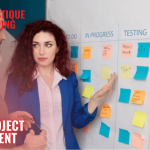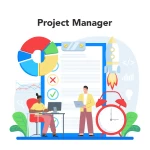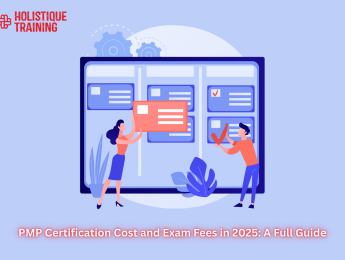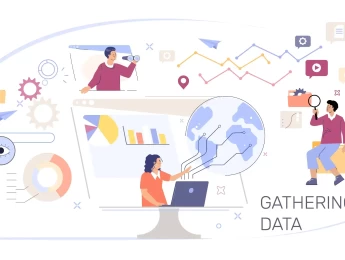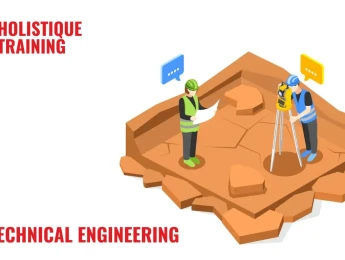- Table of Contents
- Introduction
- What Is a Minimum Viable Product (MVP)?
- The Purpose of a Minimum Viable Product (MVP)
- Why Is the MVP Important?
- 1. Efficient Resource Allocation
- 2. User-Centric Product Development
- 3. Risk Reduction
- 4. Faster Time-to-Market
- 5. Data-Driven Decision-Making
- 6. Strategic Flexibility
- 7. Cost-Efficient Learning
- 8. Enhanced Investor and Stakeholder Confidence
- The Difference Between a Prototype and a Minimum Viable Product (MVP)
- Prototypes
- Minimum Viable Products (MVPs)
- How Does MVP Help in Project Management?
- 1. Scope Management
- 2. Risk Mitigation
- 3. Stakeholder Engagement
- 4. Resource Optimisation
- 5. Agile Methodologies
- 6. Continuous Improvement
- 7. User-Centric Approach
- 8. Measurable Success Criteria
- 9. Market Responsiveness:
- 10. Transparent Decision-Making
- Leveraging MVP as a Project Manager
- 1. Clearly Define Success
- 2. Engage with Users
- 3. Iterate and Learn
- 4. Manage Expectations
- 5. Collaboration and Communication
- 6. Data-Driven Decision-Making
- 7. Risk Management
- 8. Continuous Monitoring
- 9. Flexibility and Adaptability
- The Future of MVPs in Project Management
- AI-Driven MVPs
- Global Collaboration
- Ethical Considerations
- Conclusion
Introduction
In the world of project management, the pursuit of success is an ongoing endeavour. Project managers strive to deliver products that meet customer needs and align with business objectives. In the fast-paced realm of product development, the key to success lies in delivering value swiftly and efficiently. This is where the concept of a Minimum Viable Product (MVP) comes into play. An MVP is not just a buzzword; it's a powerful strategy that can significantly impact the outcome of your project. In this comprehensive exploration of MVPs, we will delve deeper into their importance in driving innovation, mitigating risks, and maximising project success. We'll also discuss how project managers can harness the principles of MVP to optimise their project management approach.
What Is a Minimum Viable Product (MVP)?
A Minimum Viable Product (MVP) is not a new concept; it was introduced by Frank Robinson, co-founder, and president of SyncDev, in 2001. At its core, an MVP is a version of a product that includes only the essential features necessary to deliver value to early adopters or customers. It is the simplest product iteration that can be developed and deployed while effectively solving a problem or addressing a need. According to Robinson, as mentioned in an article by the Product Board, the MVP strikes the perfect balance between maximising return on investment (ROI) and minimising risk, which is directly tied to the effort and time required to bring a product to market. The primary goal of an MVP is to validate assumptions and gather feedback from users, which can then be used to refine and improve the product in subsequent iterations.
Characteristic | Description |
Essential Features | Includes only the core functionalities needed for value. |
Early Adopters | Targets early users or customers for feedback. |
Rapid Development | Focuses on swift development and deployment. |
Assumption Validation | Aims to validate assumptions about user needs. |
Continuous Improvement | Enables refinement based on user feedback. |
Table 1: Key Characteristics of an MVP
The Purpose of a Minimum Viable Product (MVP)
The purpose of an MVP is multifold. First and foremost, it allows you to test your product hypothesis and validate your assumptions with real users. By releasing a scaled-down version of your product, you can gauge user interest, understand their needs and preferences, and identify potential issues or improvements. This feedback-driven approach helps you make informed decisions about further product development, ensuring that you invest time and resources in features that truly add value.
Additionally, an MVP enables you to reduce time to market. Instead of spending months or even years developing a fully featured product, you can focus on delivering a functional version quickly. This allows you to seize opportunities, gain an early market foothold, and generate revenue sooner. By following an iterative approach, you can continuously iterate and enhance your product based on user feedback, thereby accelerating the development process and reducing the risk of investing in unnecessary features.
Why Is the MVP Important?
The importance of an MVP extends far beyond its role as a developmental strategy. It is a critical component of modern product management, and here's why:
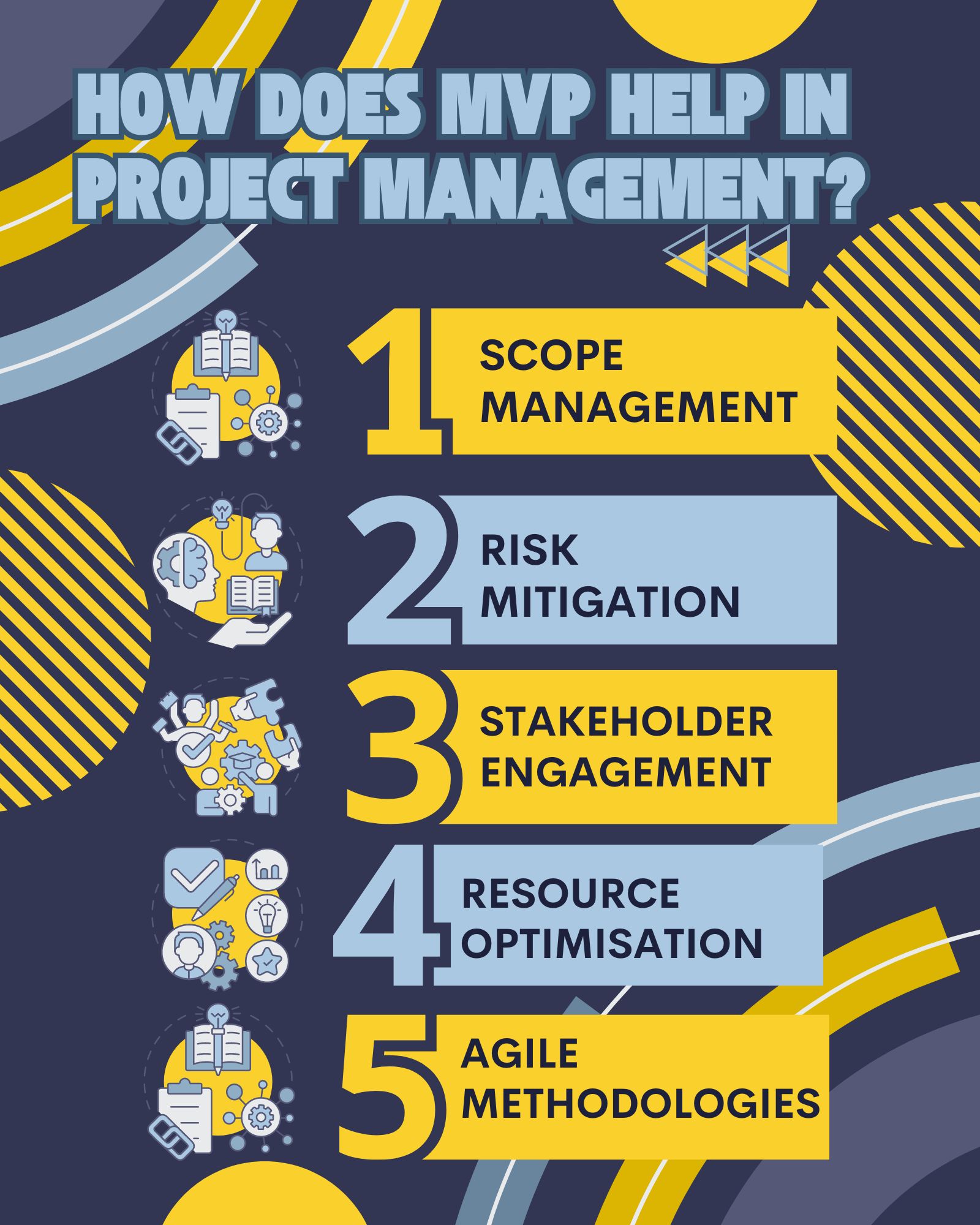
1. Efficient Resource Allocation
Developing a full-featured product demands substantial time and resources. Without an MVP, project teams might spend months or even years working on features that users may not value or need. This inefficient resource allocation can strain budgets and extend project timelines. The MVP, however, streamlines this process by allowing you to focus resources on essential features. This efficient allocation of resources ultimately enhances project cost-effectiveness.
2. User-Centric Product Development
An MVP puts the user at the centre of the product development process. Involving users early on ensures that the final product addresses their pain points and meets their expectations. This customer-centric approach leads to higher user satisfaction and fosters brand loyalty and positive word-of-mouth marketing. An MVP helps you build products that resonate with your target audience.
3. Risk Reduction
One of the primary advantages of MVPs is risk mitigation. By launching a scaled-down version of your product, you're essentially testing the waters before diving in. This early validation helps you identify potential market challenges, technical obstacles, or user adoption issues. Armed with this knowledge, you can make informed decisions and course corrections, significantly reducing the risk of developing a product that falls short of expectations.
4. Faster Time-to-Market
In today's fast-paced business environment, speed matters. An MVP allows you to bring a functional product to market quickly, according to Incora. This accelerated time-to-market can be a game-changer, especially when you're in a competitive industry. You gain a first-mover advantage by seizing early market opportunities and generating revenue sooner. Moreover, the faster release of your MVP allows you to gather feedback and iterate, ensuring that subsequent versions are even more refined.
5. Data-Driven Decision-Making
An MVP is not just about releasing a product; it's about gathering data and insights. User feedback, usage statistics, and performance metrics collected during the MVP phase provide valuable information that guides decision-making. With data in hand, project teams can make informed choices about which features to prioritise, what improvements to make, and how to tailor the product to evolving user needs. Data-driven decision-making is the key to continuous improvement and staying ahead in a competitive market.
6. Strategic Flexibility
In a dynamic business landscape, adaptability is paramount. MVPs allow you to pivot your project's direction if needed. You can adjust your product strategy accordingly if early user feedback reveals a significant shift in market demands or user preferences. This adaptability prevents your project from becoming overly rigid and allows you to stay aligned with evolving business goals.
7. Cost-Efficient Learning
Innovation often comes with a degree of uncertainty. Developing a full-featured product without testing the market waters can lead to costly mistakes. An MVP, on the other hand, allows you to experiment and learn without committing all your resources upfront. It's a cost-efficient way to explore new ideas, technologies, or market niches. Even if your MVP doesn't achieve the desired results, the lessons learned are invaluable and can be applied to future projects.
8. Enhanced Investor and Stakeholder Confidence
Investors and stakeholders are more likely to support a project when they see evidence of user interest and validation through an MVP. By showcasing a functional product that has already gained traction or received positive feedback, you instil confidence in those with a vested interest in the project's success. This can lead to increased funding opportunities and smoother project execution.
The MVP is a linchpin in modern project management and product development. It is a strategic tool for allocating resources efficiently, prioritising user needs, mitigating risks, accelerating time-to-market, making data-driven decisions, remaining flexible in the face of change, and enhancing overall project efficiency and success. By recognising the multifaceted importance of MVPs, project managers can harness their potential to drive innovation and deliver products that truly resonate with their target audience.
The Difference Between a Prototype and a Minimum Viable Product (MVP)
You might be wondering how an MVP differs from a prototype. While both serve vital roles in the product development process, they have distinct purposes and characteristics. Let's explore these differences in detail:
Prototypes
Prototypes are early-stage models or representations of a product. They primarily gather design, functionality, and user experience feedback. Here are some key characteristics of prototypes:
- Design Focus: Prototypes prioritise the visual and interactive aspects of a product. They aim to provide a tangible representation of how the final product will look and feel.
- Limited Functionality: Prototypes often lack functional features. They may simulate interactions and user interfaces without performing actual tasks or delivering value.
- User Testing: Prototypes are designed for user testing and validation. They are instrumental in identifying design flaws, usability issues, and user preferences.
- Low Development Effort: Developing a prototype typically requires less time and effort than an MVP since it does not include the product's full functionality.
- Risk Mitigation: Prototypes help reduce design-related risks by uncovering issues early in development. They ensure that the final product aligns with user expectations.
Minimum Viable Products (MVPs)
Conversely, MVPs are functional versions of a product with the primary goal of delivering value to users and validating market viability. Here are the key characteristics of MVPs:
- Value Delivery: MVPs include essential features necessary to provide value to users. They focus on addressing real user needs and solving specific problems.
- Functional Features: Unlike prototypes, MVPs go beyond design and incorporate functional features that users can interact with to accomplish tasks or solve problems.
- User Adoption: MVPs are not just for testing; they aim to attract and retain users. They target early adopters and early customers to gather feedback and assess market demand.
- Market Testing: MVPs are launched to the market to test the product's market viability. They help determine whether the product has a place in the market and whether users are willing to adopt it.
- Resource Investment: Developing an MVP involves a more substantial resource investment compared to a prototype. However, this investment is justified by the potential for user acquisition and revenue generation.
Characteristics | Prototype | Minimum Viable Product (MVP) |
Primary Purpose | Gather feedback on design and UX | Deliver value, validate market viability |
Design Focus | Emphasis on visual and interactive aspects | Includes functional features for user tasks |
Functionality | Limited functioanlity, often non-functional | Includes core functional features |
User Testing | Used for usability testing and design validation | Targeted a more significant resource investement |
Development Effort | Requires less time and effort | Involves a more significant resource investement |
Risk Mitigation | Reduces design- related risks | Tests market viability and user adoption |
Table 2: Differences between a prototype and an MVP
How Does MVP Help in Project Management?
Adopting Minimum Viable Products (MVPs) can be a game-changer in project management. MVPs offer several advantages that can greatly enhance the project management process. Here's a comprehensive look at how MVPs benefit project management:
1. Scope Management
MVPs compel project managers to prioritise features and functionalities. By focusing on the core value proposition, you can avoid scope creep, which is the uncontrolled expansion of project requirements. Scope creep can lead to project delays, cost overruns, and decreased stakeholder satisfaction. MVPs help maintain a clear project vision and prevent unnecessary feature bloat.
2. Risk Mitigation
Launching an MVP allows project managers to identify and address potential risks early in the project lifecycle. By gathering user feedback and validating assumptions, you can uncover hidden issues, technical challenges, or market uncertainties. This proactive approach enables you to make informed decisions, adjust project plans, and mitigate risks before they become critical roadblocks. In essence, MVPs act as risk detectors, ensuring the project stays on course.
3. Stakeholder Engagement
An MVP is an effective tool for engaging stakeholders throughout the project. Demonstrating a working prototype or a minimum set of features can elicit feedback and secure stakeholder buy-in early on. This collaborative approach fosters trust and transparency in project management. When stakeholders see tangible progress and have the opportunity to provide input, it leads to better communication and smoother project execution.
4. Resource Optimisation
MVPs enable project managers to optimise resource allocation. You can streamline development efforts and reduce unnecessary work by delivering a minimal yet valuable product. This results in efficient resource utilisation, shorter development cycles, and improved time to market. Resource optimisation is crucial in project management to ensure that resources are allocated where they have the most significant impact.
5. Agile Methodologies
MVPs align well with agile project management methodologies such as Scrum or Kanban. Their iterative nature complements the incremental and iterative approach of agile methodologies. Agile emphasises responding to change, customer collaboration, and delivering working solutions. MVPs facilitate these principles by encouraging frequent iterations and continuous improvement. They allow project teams to learn, adjust, and deliver value incrementally, all of which are core tenets of agile methodologies.
6. Continuous Improvement
MVPs promote a culture of continuous improvement within project teams. By releasing an MVP and gathering user feedback, project managers and teams can identify areas for enhancement. This iterative approach encourages ongoing learning and adaptation. Continuous improvement leads to better products and helps project teams grow and evolve over time, becoming more adept at delivering value to stakeholders.
7. User-Centric Approach
MVPs keep the end-user focused throughout the project. Involving users from the early stages of development ensures their needs and preferences are considered. This customer-centric approach aligns the project with user expectations, increasing the likelihood of delivering a solution that genuinely meets their requirements. MVPs empower project managers to incorporate user feedback continuously, ensuring that the project remains responsive to evolving market demands.
8. Measurable Success Criteria
MVPs encourage project managers to define clear success criteria for their projects. These criteria align with the core value proposition and user needs. By setting measurable goals, project managers can objectively evaluate project success. This ensures that project objectives are well-defined, progress is measurable, and outcomes are aligned with the project's purpose.
9. Market Responsiveness:
In today's rapidly changing markets, being responsive is essential. MVPs enable project managers to adapt to market shifts and emerging trends quickly. Project managers can make timely adjustments to meet evolving customer demands by releasing and iterating based on user feedback. This market responsiveness gives organisations a competitive edge in dynamic industries.
10. Transparent Decision-Making
MVPs facilitate transparent decision-making within project teams and organisations. As project managers gather data and insights from the MVP process, decisions become more data-driven and less reliant on intuition or speculation. This transparency builds confidence in project direction and enables informed choices about future iterations or modifications.
Leveraging MVP as a Project Manager
As a project manager, you play a pivotal role in the success of your project. Leveraging MVP principles can significantly enhance your ability to plan, execute, and deliver successful projects. Here are key strategies for project managers to harness the power of MVPs:
1. Clearly Define Success
Define clear success criteria for your project. Ensure that these criteria align with your product or project's core value proposition. Success should be measured in terms of meeting deadlines and budget constraints and delivering a product that effectively solves the problem at hand and meets user needs. By setting measurable goals, you can evaluate project success objectively and keep your team focused on the most critical outcomes.
2. Engage with Users
User engagement is at the heart of MVP development. Involve users and stakeholders throughout the project lifecycle. Actively seek their feedback, understand their pain points, and incorporate their insights into the product roadmap. This user-centric approach ensures that your project remains customer-focused and delivers value that resonates with the target audience. Regular communication with users also builds trust and fosters long-term relationships.
3. Iterate and Learn
Embrace an iterative mindset and encourage continuous improvement. MVPs are designed for multiple iterations. Release early versions of your product, gather user feedback, and iterate based on user insights. Leverage the power of data and analytics to make informed decisions and drive product enhancements. The iterative approach ensures that your project always evolves, improves, and stays in tune with user needs.
4. Manage Expectations
Communicate the purpose and limitations of an MVP to stakeholders. Set realistic expectations about the scope and functionality of the initial release. Educate stakeholders about the benefits of an iterative approach and the value of gathering user feedback for future iterations. Managing expectations is crucial to avoid disappointment and ensure everyone understands MVP-driven projects' incremental nature.
5. Collaboration and Communication
Foster a collaborative environment within your project team. Encourage cross-functional collaboration, open communication, and knowledge sharing. Emphasise the importance of frequent feedback loops and continuous learning. Collaboration enhances team morale and results in better decision-making and a more agile response to project challenges. Effective communication ensures that everyone is aligned with project goals and progress.
6. Data-Driven Decision-Making
MVPs generate a wealth of data and insights. Use this data to drive project decisions. Analyse user feedback, usage statistics, and performance metrics to inform your choices. Data-driven decision-making ensures that project managers and teams make informed choices about which features to prioritise, what improvements to make, and how to tailor the product to evolving user needs. This approach reduces uncertainty and increases project efficiency.
7. Risk Management
MVPs can be an effective tool for risk management. You can uncover potential risks and issues by releasing a minimal product version early. Monitor user adoption and feedback closely to identify and promptly address any unexpected challenges. The iterative nature of MVPs allows for agile risk management, enabling you to adapt your project strategy in response to emerging risks.
8. Continuous Monitoring
Continuously monitor the performance and adoption of your MVP. Use key performance indicators (KPIs) to track progress toward project objectives. Regularly review user feedback and satisfaction metrics to identify areas for improvement. Continuous monitoring ensures your project remains on track and responsive to changing conditions.
9. Flexibility and Adaptability
Stay flexible and adaptable in your project management approach. MVPs are designed to accommodate change and evolution. If early user feedback or market dynamics indicate a need for adjustments, be willing to pivot and adapt your project strategy. This adaptability is a key strength of MVP-driven projects, allowing you to stay aligned with evolving business goals and market demands.
In summary, leveraging MVP principles as a project manager enhances your ability to deliver successful projects that align with user needs, maximise value, and mitigate risks. By clearly defining success criteria, engaging with users, embracing iteration, managing expectations, fostering collaboration, making data-driven decisions, actively managing risks, and staying flexible, project managers can effectively harness the power of MVPs to drive project success in a dynamic and competitive landscape.
The Future of MVPs in Project Management
As the landscape of project management evolves, so does the role of MVPs. The future promises exciting developments in this realm. Here are three intriguing aspects to consider:
AI-Driven MVPs
Artificial Intelligence (AI) and machine learning are increasingly integral to project management. In the future, AI-driven MVPs could help project managers make data-driven decisions. These AI systems could analyse user feedback, market trends, and project performance data to suggest the most valuable features to include in an MVP. This data-driven approach could enhance the success rate of MVPs and streamline the decision-making process.
Global Collaboration
The world is becoming more interconnected, and project teams often span across borders. In the future, MVPs could facilitate even greater global collaboration. With advancements in virtual reality (VR) and augmented reality (AR), project teams could collaborate as if they were in the same room, making it easier to gather user feedback from diverse global markets and cultures. This could result in more inclusive and culturally sensitive MVPs.
Ethical Considerations
Ethical considerations will emerge as MVPs continue to shape the project management landscape. Project managers will need to carefully balance delivering value and respecting user privacy and data security. Ethical MVP development will be crucial to building user trust and maintaining a positive reputation in an increasingly conscious consumer market.
Conclusion
In conclusion, an MVP is not just a trendy acronym; it's an essential tool for the success of your project. By focusing on the core value proposition, validating assumptions, and incorporating user feedback, you can deliver a product that meets user needs, reduces time-to-market, and mitigates risks. As a project manager, embracing an MVP mindset enables you to optimise project planning, execution, and resource management. By leveraging the power of MVP, you can drive innovation, foster customer-centricity, and increase the chances of project success in today's competitive landscape. The future of project management is evolving, and MVPs are here to lead the way into a more efficient, customer-focused, and ethically conscious era of project development. So, go ahead and make MVPs an integral part of your project management toolkit, and watch your projects thrive in this dynamic landscape.
If you want to enhance your project management skills and apply MVP principles effectively, consider enrolling in our comprehensive course, ‘Project Management for Non-Managerial Positions.’ This course is designed to empower individuals at all levels with the knowledge and tools needed to excel in project management, making you an invaluable asset to your organisation. Don't miss the opportunity to take your project management skills to the next level – enrol in our course today!



